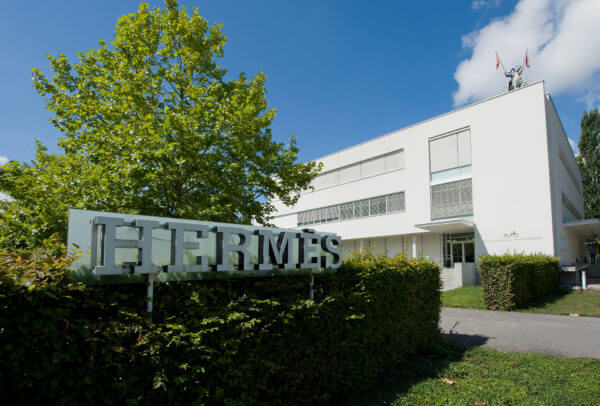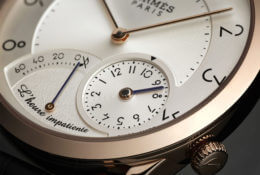Another month, another increase in sales for Hermès, where it seems growth has been built into the business model – a fact that hasn’t escaped the financial markets. Investors traditionally court luxury companies to begin with, but the love affair with Hermès has gone well beyond hand-holding. In April, Hermès shares climbed to an all-time high of €461, with a price-earnings ratio heading off the scale at more than 40. Granted, Hermès is eight times smaller than LVMH and makes revenue half that of Richemont, but its profitability would make any self-respecting financial director go weak at the knees. Like-for-like sales climbed 7.5% to €5.2 billion in 2016. The company recorded operating profits of €1.6 billion, a margin of 32%. By way of comparison, for the financial year ended 31 March 2017, Richemont posted an operating margin of 16.6% on sales of €10.6 billion, LVMH 18.7% in 2016, and Swatch Group 10.7%.
Isabelle Chaboud attributes Hermès' success to a few key factors, the first of which is a "truly French identity" rooted in quality creations with links to the equestrian world.
There can be only one conclusion: “Each year, the family firm outstrips its rivals in terms of profitability and performance,” notes Isabelle Chaboud, associate professor at Grenoble School of Management where she lectures in financial analysis, quoted in a lengthy article published (in French) at theconversation.com. Nor should FY2017 be an exception to the rule. After the first quarter ended with a solid 13.5% increase in sales, management is confident the group will steer the same course for the entire year. At a time when a good many multinationals are coming adrift, Hermès is sailing full steam ahead, and with the benefit of being virtually debt-free alongside a net cash position of €2.3 billion. The only cloud on the horizon is the company’s watch business, which accounts for 3% of group sales. It dropped 3.2% last year to €158 million, although the tide appears to be turning with the decline shrinking from 10.5% between October and December 2016 to 3.5% for the first quarter 2017.

Isabelle Chaboud attributes Hermès’ success to a few key factors, the first of which is a “truly French identity” rooted in quality creations with links to the equestrian world. While the firm embarked upon a diversification strategy as of the 1950s, and has built an international sales network that includes 307 Hermès stores worldwide, the vast majority of its products are still made in France (watches being one of the few exceptions, in order to comply with Swiss-Made criteria). Of its 50 production sites, 38 are on home turf. They employ 4,300 highly skilled workers, including 2,900 leather specialists who carry on generations of expertise. “Keeping manufacturing in its country of origin for most of its products is a key element of Hermès’ strategy,” comments Isabelle Chaboud. As is its capacity to “make outstanding products and invent new objects, always with beauty, quality and refinement as absolute priorities.” As examples, she cites the classic Kelly and Birkin bags, Eau d’Hermès fragrance, and the iconic silk scarves, all made with constant attention to tradition, craftsmanship and the quality of raw materials, particularly skins. In fact the company owns three crocodile farms in Australia.
This internationally renowned group has preserved its identity and is the epitome of French luxury.
Hermès can also rely on its talent for innovation. In 2010 it launched Petit h with Pascale Mussard as creative director. This concept store sells one-off items that give a new life to discarded objects and materials recovered from Hermès workshops. Another example is the collaboration with Apple, to make straps for its smartwatch. Latest to date is the Double Buckle Cuff in Swift or Epson calfskin. A final factor, and one that shouldn’t be underestimated, is the family presence both on the management board and as shareholders. Even Bernard Arnault (LVMH) had to back down after stealthily building up a 23% stake – proof of the united front put up by Thierry Hermès’ descendants, who control 70% of the group. For Isabelle Chaboud there can be no doubt: “This internationally renowned group has preserved its identity and is the epitome of French luxury.”












